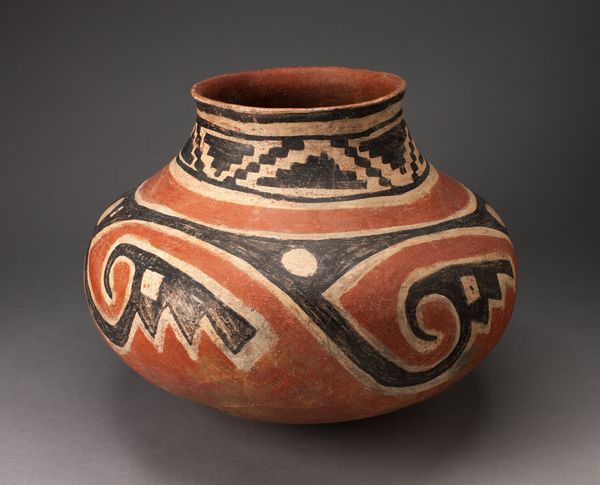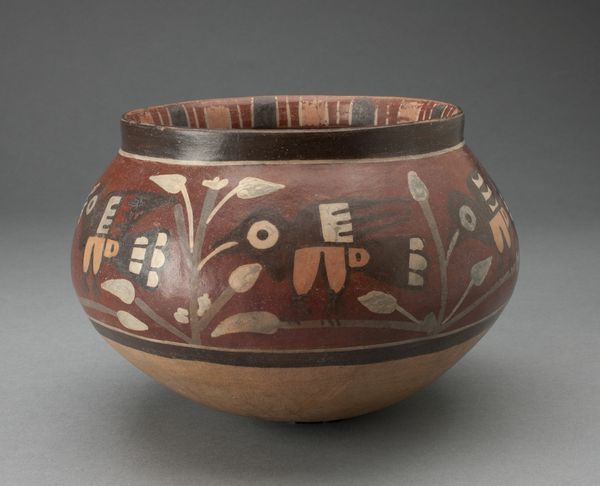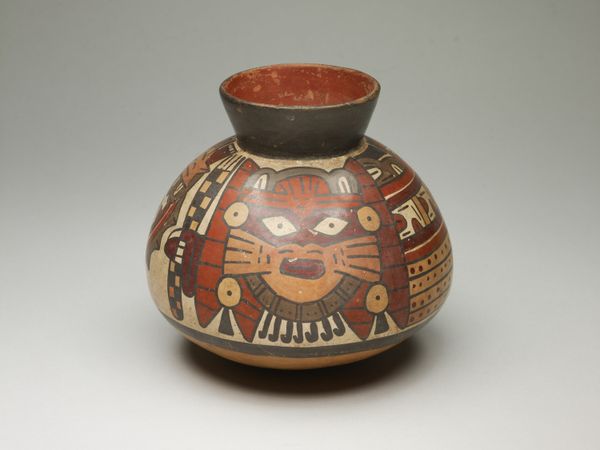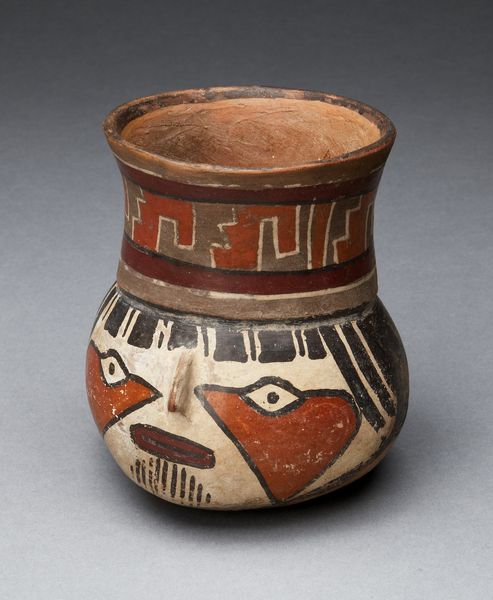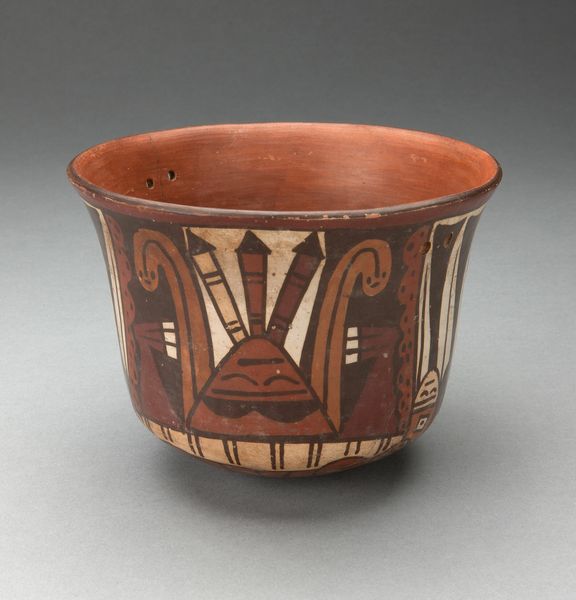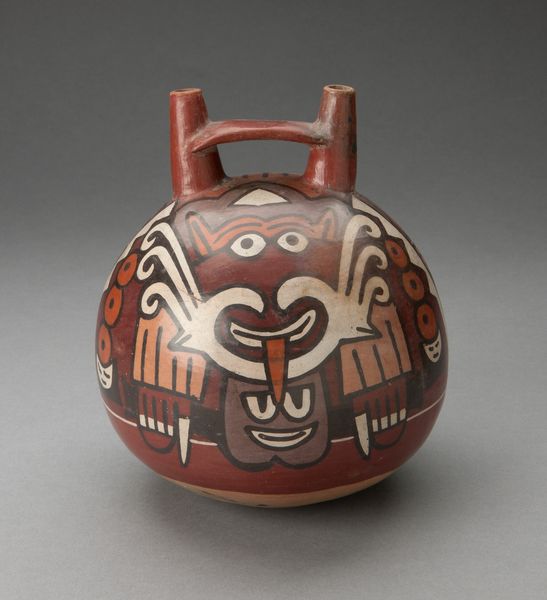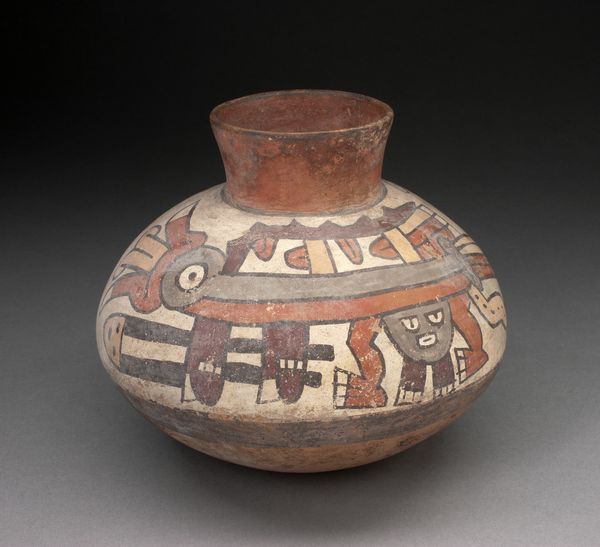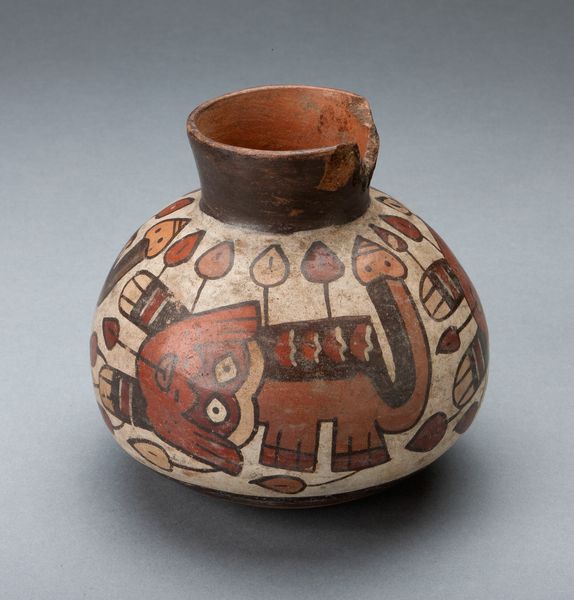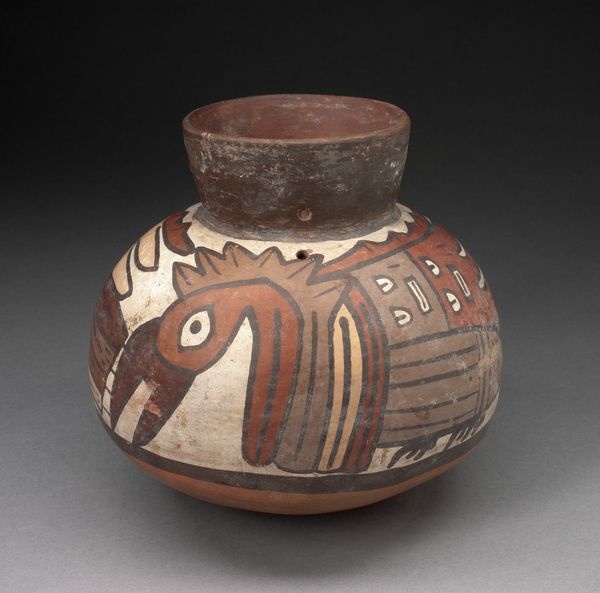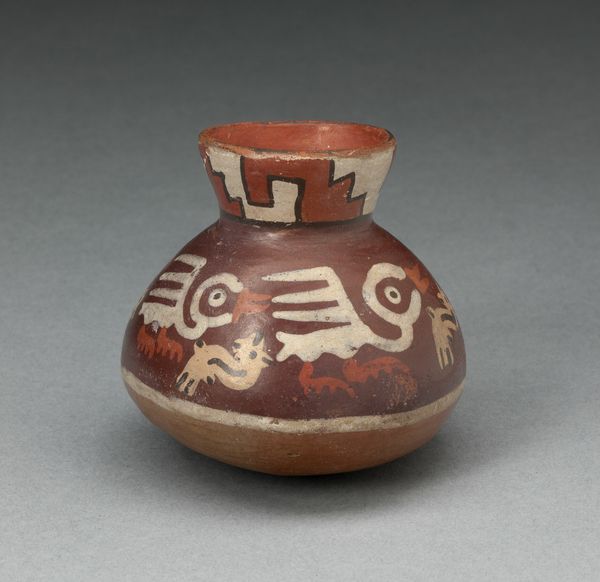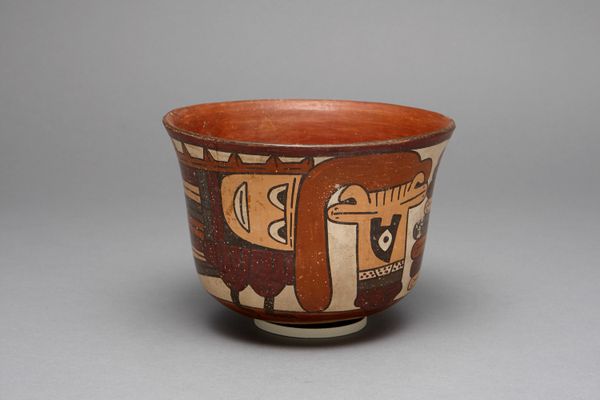
ceramic, earthenware
#
ceramic
#
earthenware
#
geometric
#
ceramic
#
indigenous-americas
Dimensions: 12.4 × 14.9 cm (4 7/8 × 5 7/8 in.)
Copyright: Public Domain
Editor: So, this terracotta jar, "Jar Depicting Abstract Frogs," dates all the way back to 180-500 CE. It’s from the Nazca culture and it’s currently housed at the Art Institute of Chicago. I find the use of such simple materials fascinating. What story do the material and its creation tell us? Curator: Absolutely! We should consider the source of the earthenware itself – the local clay. The process of digging, preparing, and firing would have been deeply connected to the community. Look at the evenness of the terracotta—achieved without a potter's wheel. This highlights the skill and labor involved in its construction, perhaps the efforts of specific craftspeople or families specializing in pottery production. The depiction of the frogs, what does that say to you? Editor: It makes me think about resource management. Frogs signal water, right? The fact that the artist uses them as the subject matter means it’s possible they’re crucial for the prosperity of their people. I see the frogs represented as almost geometric, stylized. Is that abstraction functional to this purpose? Curator: Exactly. Stylization might connect with the function you mention, ritual. Were these jars made primarily for funerary offerings, trade, or daily use? These details reveal cultural attitudes toward labor and consumption, which helps us understand how these societies made use of materials for functional purposes. Does the paint or pattern provide any further information regarding usage? Editor: Thinking about that, it looks like the jar’s decoration wasn’t just superficial. The images had deeper significance linked to material reality, whether it's their access to potable water or honoring those skilled in the crafting of clay. Curator: Right! And thinking about all that labor, from sourcing clay to firing and painting, contextualizes the piece itself within its societal dynamics, and how “art” was an inextricable part of daily production. Editor: I never thought about artmaking in terms of social production. It’s incredible to consider the implications of the entire process behind creating something like this. Curator: Yes, examining materiality in this way allows us to expand our perception of what it really means for humans to make and to value art.
Comments
No comments
Be the first to comment and join the conversation on the ultimate creative platform.
